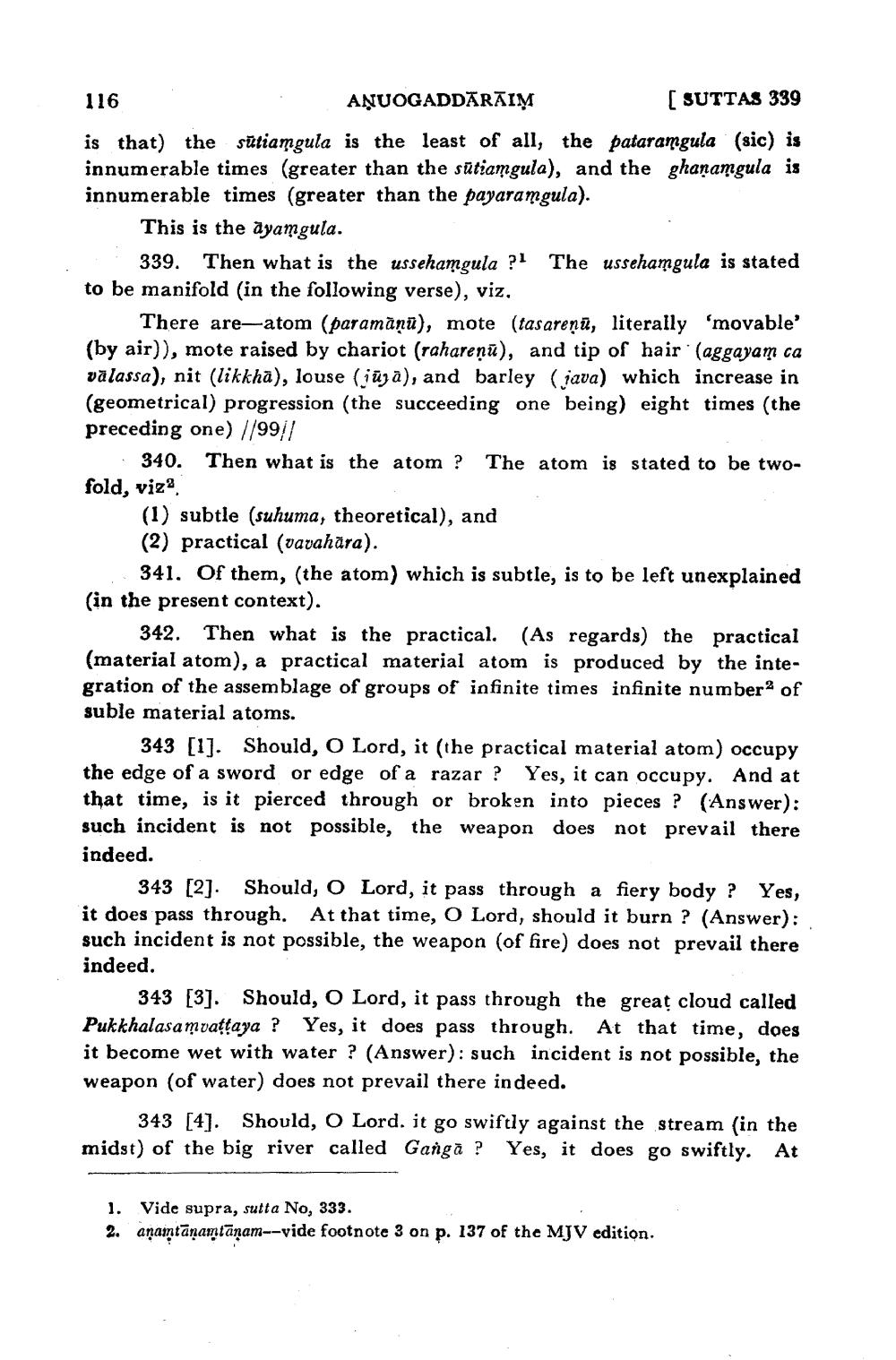________________
116
AŅUOGADDĀRĀIŅ
[ SUTTAS 339
is that) the sūtiamgula is the least of all, the pataramgula (sic) is innumerable times (greater than the sūtiamgula), and the ghanamgula is innumerable times (greater than the payaramgula).
This is the ayamgula.
339. Then what is the ussehamgula ?! The ussehamgula is stated to be manifold (in the following verse), viz.
There are-atom (paramāņā), mote (tasarenü, literally 'movable' (by air)), mote raised by chariot (raharenū), and tip of hair (aggayam ca vālassa), nit (likkha), louse (iūjā), and barley (java) which increase in (geometrical) progression (the succeeding one being) eight times (the preceding one) //99//
· 340. Then what is the atom ? The atom is stated to be twofold, viza
(1) subtle (suhuma, theoretical), and (2) practical (vavahāra).
341. Of them, (the atom) which is subtle, is to be left unexplained (in the present context).
342. Then what is the practical. (As regards) the practical (material atom), a practical material atom is produced by the integration of the assemblage of groups of infinite times infinite number of suble material atoms.
343 [1]. Should, O Lord, it (the practical material atom) occupy the edge of a sword or edge of a razar ? Yes, it can occupy. And at that time, is it pierced through or broken into pieces ? (Answer): such incident is not possible, the weapon does not prevail there indeed.
343 [2]. Should, O Lord, it pass through a fiery body ? Yes, it does pass through. At that time, O Lord, should it burn ? (Answer): such incident is not possible, the weapon (of fire) does not prevail there indeed.
343 [3]. Should, O Lord, it pass through the great cloud called Pukkhalasamvattaya ? Yes, it does pass through. At that time, does it become wet with water ? (Answer): such incident is not possible, the weapon (of water) does not prevail there indeed.
343 [4). Should, O Lord. it go swiftly against the stream (in the midst of the big river called Ganga ? Yes, it does go swiftly. At
1. Vide supra, sutta No, 333. 2. anamtānamtānam--vide footnote 3 on p. 137 of the MJV edition.




